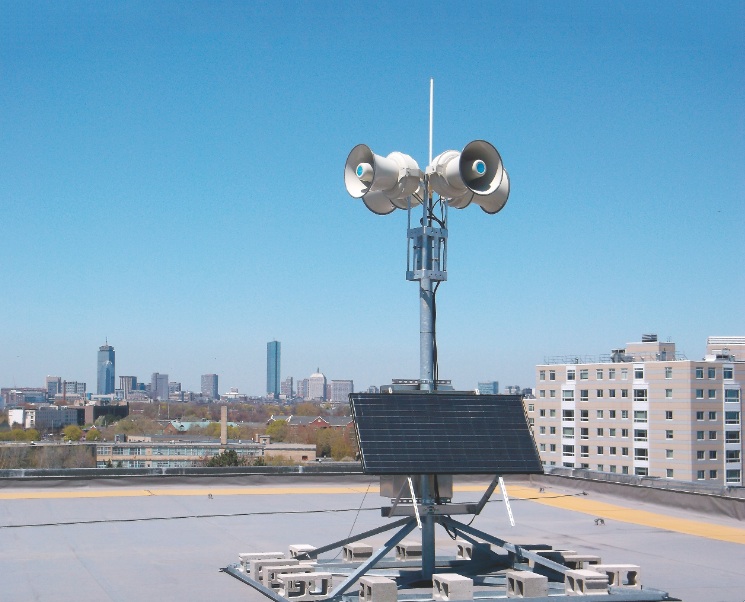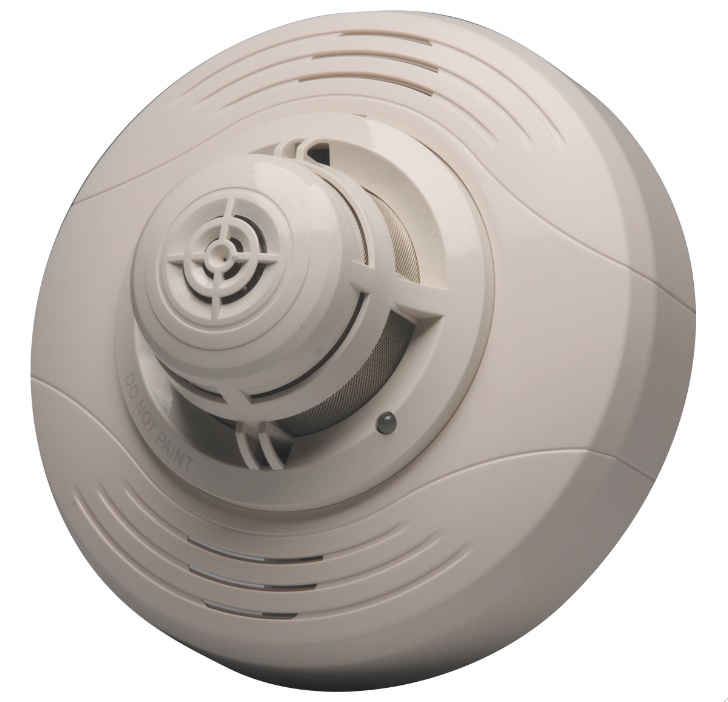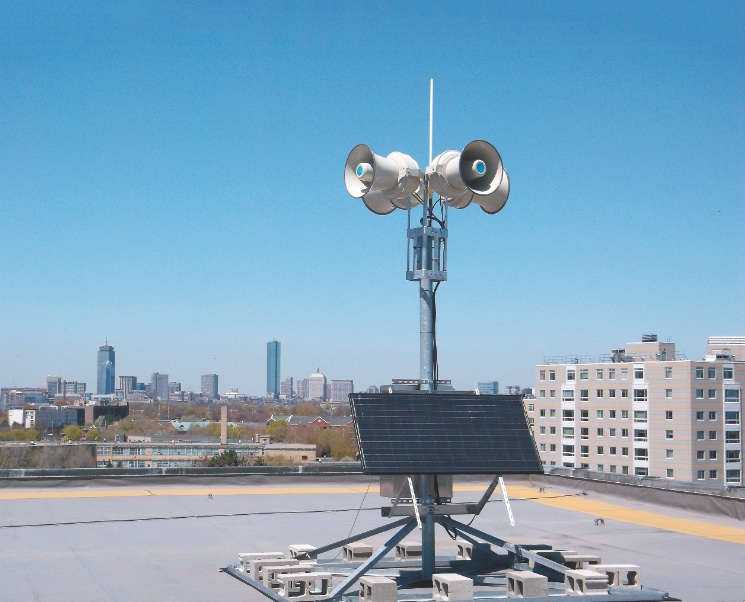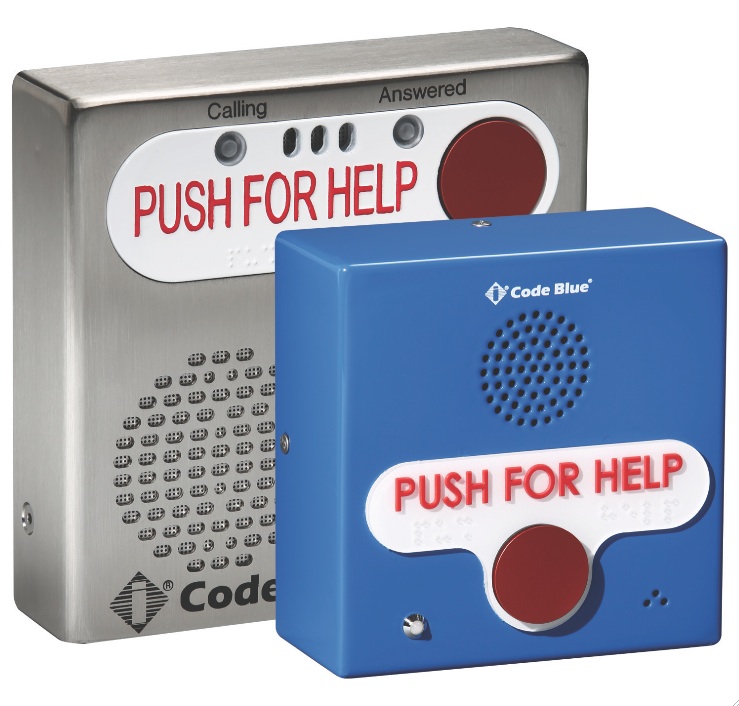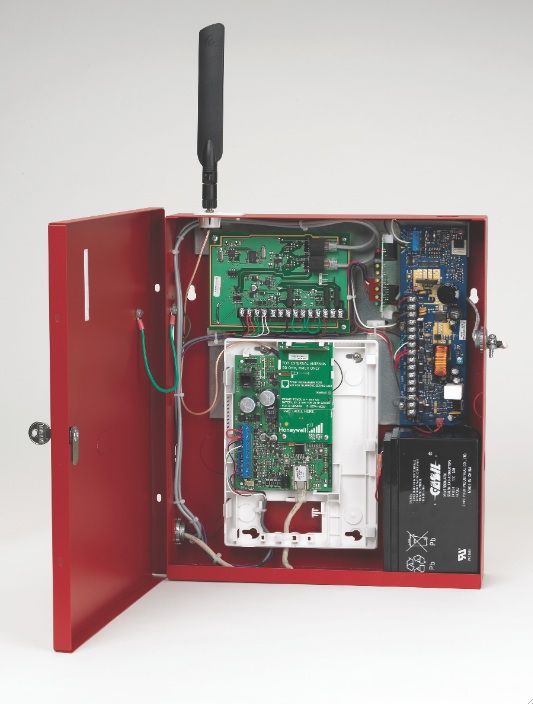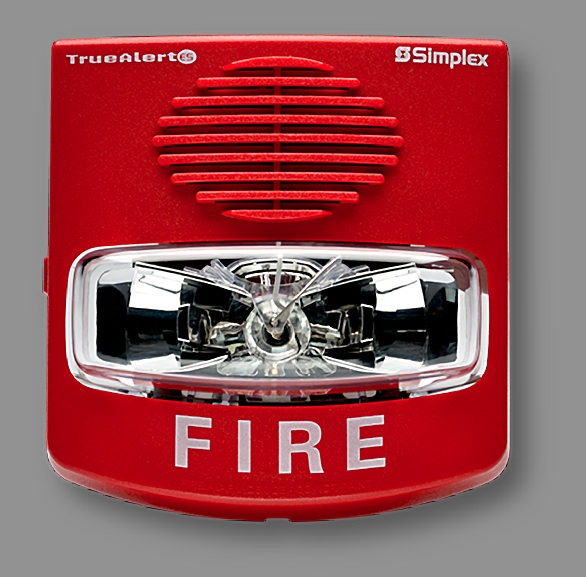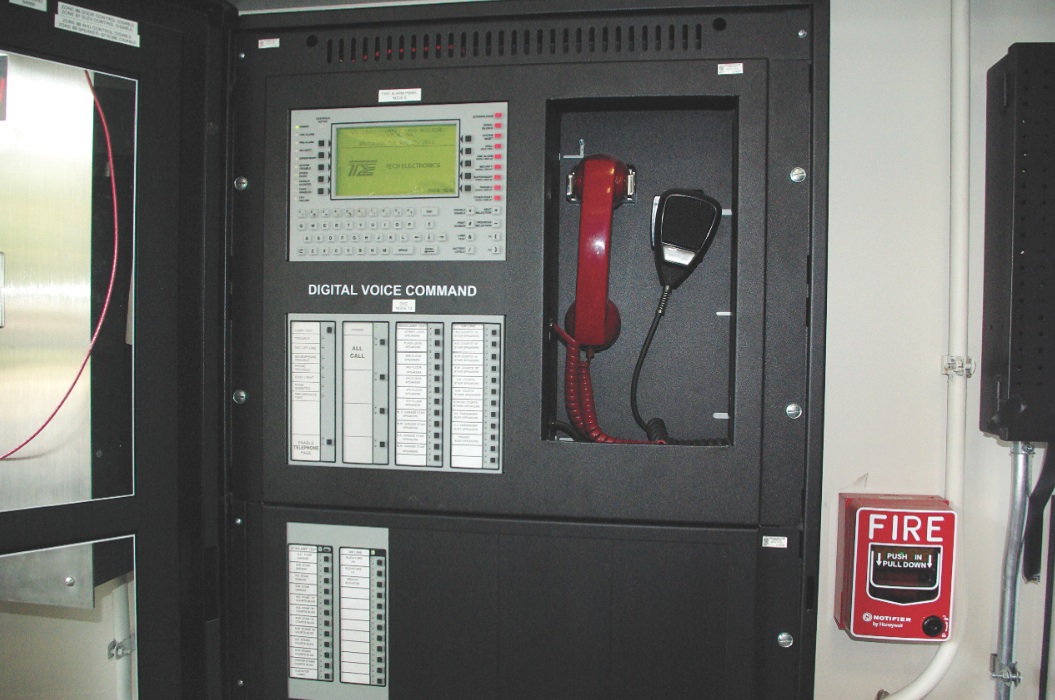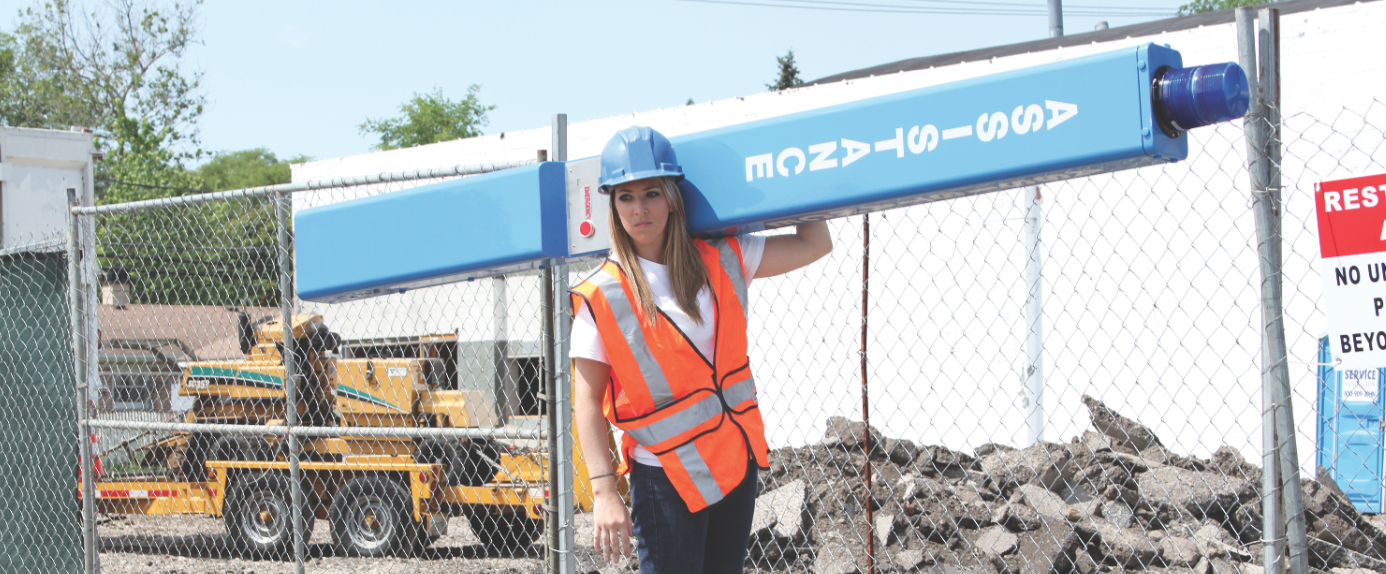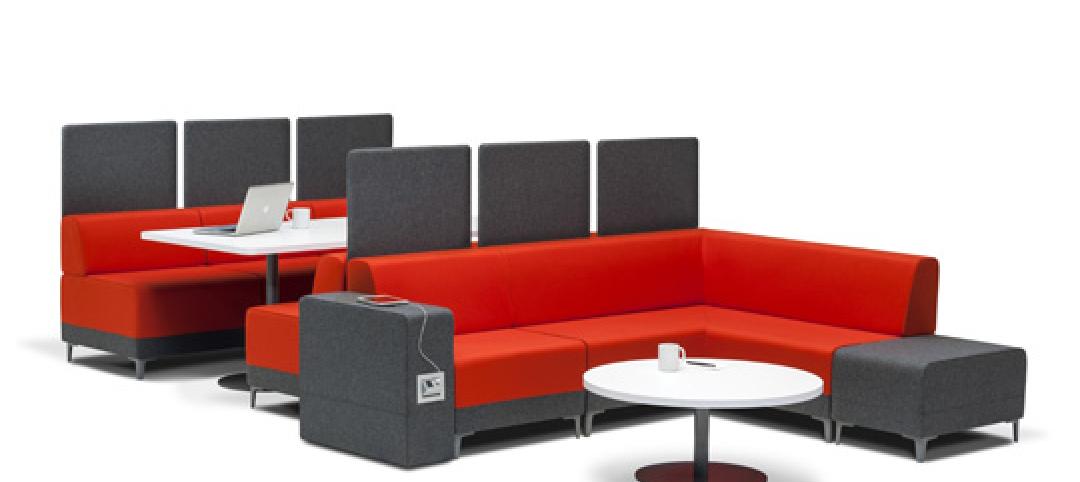From a dual fire-CO detector to an aspiration-sensing fire alarm, BD+C editors present a roundup of new fire and life safety products and technologies.
CRITICAL CYBER FACILITY PROTECTED WITH FAAST DETECTION TECHNOLOGY
The Cyber Innovation Center, part of the National Cyber Research Park in Bossier City, La., provides 139,000 sf of facilities to support users in the government, industry, private research, and academic sectors. The goal: accelerate technology transfer and improve workforce development. A recent installation by Fire Tech Systems combined a pre-action sprinkler system and System Sensor’s FAAST (fire alarm aspiration sensing technology) equipment to allow extremely early detection. The sprinkler system has a double interlock, requiring smoke to trip the detectors and charge the pipes with water, plus heat to fuse at least one sprinkler head. Only then will water discharge. The equipment uses a high-sensitivity blue LED to detect incipient fire conditions and an infrared laser to detect nuisance particulate matter, reducing the number of false alarms. Fire Tech specified separate FAAST systems for hot aisles and cold aisles to accommodate the high airflow integral to the HVAC design. System Sensor
FIRE AND CARBON MONOXIDE DETECTOR ELIMINATES NEED FOR MULTIPLE DEVICES
The new Farenhyt IDP-Fire-CO detector senses both fire and carbon monoxide, eliminating the common use of multiple detectors, notification devices, monitor modules, and associated junction boxes. The detector meets new CO requirements for commercial sleeping occupancies that have been put in place by nearly 40 states, covering buildings such as hotels, college residences, healthcare facilities, and military housing. Areas near fossil-fuel-burning appliances, such as laundry and mechanical rooms and rooms with gas fireplaces, are also prime candidates for CO detection. The single-unit design includes the B200S sounder base, which delivers customized tones to differentiate between fire and CO alarm events. Four separate sensors look for smoke, CO, light/flame, and heat to identify events and help eliminate nuisance alarms. Silent Knight
AUDIBLE VOICE IS BASIS FOR CAMPUS ALERT SYSTEMS
ATI Systems designs solutions for campus emergency alerts based on clear, intelligible voice notification combined with strobes and LED signage. Tones and voice commands are designed for speed and reliability, and can be integrated with secondary notification methods such as emergency text messages, telephone alerts, and e-mail. Control centers may be stationary or mobile. The product line includes control stations running the manufacturer’s MassAlert software, communication control units, high-powered speaker stations (HPSS16, HPSS32, and MHPSS) combined with indoor and outdoor speaker units, and additional control units for integration of third-party systems. Acoustical analysis encompasses GIS mapping of potential sound coverage for clients’ campuses, aiding in speaker selection, orientation, and placement. ATI Systems
TWO-WAY SPEAKERPHONES RESIST WEATHER, VANDALS, AND UV DEGRADATION
Code Blue’s new VoIP emergency speakerphones, the IP1500 and IP2500, are designed as a cost-effective solution for settings such as hallways, stairwells, classrooms, parking garages, elevators, and entryways. Available as lightweight surface- or flush-mounted units that are vandal-, UV-, and weather-resistant, the speakerphones offer full duplex SIP functionality for clear sound for both caller and operator. Fault monitoring and self-reporting, a key aspect of UL 2017 certification, eliminate the burden of frequent maintenance checks. An auxiliary output can be used to trigger a light, door, or gate. The speakerphones are ADA compliant, FCC certified, and Cisco compatible. Code Blue
SCHOOL DISTRICT SAVES THOUSANDS BY SWITCHING TO IP ALARM COMMUNICATIONS
Until recently, the 144 buildings in the DeKalb County (Ga.) School District relied on a conventional, two-way, proprietary radio system for fire alarm communications. Changes in radio frequency requirements by the FCC led the district to seek an alternative to replacing all radio transmitters. Eventually officials decided to communicate alarm information over existing fiber IP lines using Fire-Lite Alarms’ Advanced IP Digital Alarm Communicator Transmitter, or IP-DACT. The new reporting system, which accommodates the district’s mix of equipment from multiple manufacturers, cost about half as much as upgrading the proprietary radio equipment would have cost. Connection testing frequency has been changed from once a day to every 30 to 90 seconds, and secure 512-bit encryption helps prevent spoofing. The district’s year-long upgrade process included sending staff to three-day training sessions conducted by the manufacturer to make sure they understood the capabilities of the new system. Fire-Lite Alarms
COMMUNICATOR OFFERS CHOICE: IP, 4G CELLULAR, OR BOTH
Honeywell Power’s IPGSM-4G fire alarm communications panel allows installers to select IP, GSM (cellular), or both for fire alarm reporting to a central station. The units are compatible with most brands of fire alarm control panels, connecting to both ports on the digital alarm communications transmitter (DACT). For maximum reliability, the manufacturer recommends configuration with IP communication over an Ethernet network as the primary system, using GSM as a backup. Units automatically select the best available cellular signal in the area, based on signal strength, to maintain life-safety communications. The IPGSM-4G may be mounted as far as 20 feet away from the fire alarm control panel, making it suitable for both new installations and retrofits. Honeywell Power
ALARM REVAMP PROTECTS PRICELESS FIRE MUSEUM COLLECTION
The nonprofit Fire Museum of Maryland, in Lutherville, houses an irreplaceable collection of antique fire apparatus, fire-fighting equipment, alarm systems, and more than 10,000 images and documents. During a recent expansion for a new visitor center, offices, and archives, the alarm system showed evidence of failure. Museum supporter Marty Smith, President/CEO of Alarm Tech Solutions, led an effort to replace the equipment with a Gamewell-FCI E3 Series fire alarm control panel and integral network graphic annunciator. Since the museum does not yet have funds for an automatic sprinkler system, Alarm Tech installed analog addressable spot smoke detectors in the display areas, and a FAAST (fire alarm aspiration sensing technology) system for the archives room, providing very early warning of smoke. Alarm Tech donated the CAD work, shop drawings, programming, testing, UL certification, and commissioning. Sunbelt Rentals and Freestate Electrical Construction also donated services. Gamewell-FCI
INTELLIGENT NOTIFICATION APPLIANCES LEVERAGE ADDRESSABLE TECHNOLOGY
SimplexGrinnell, a Tyco business, has introduced TrueAlert ES—a family of intelligent notification devices designed to be economical and easy to use. The ES, or eServices, notification encompasses Web-enabled addressable technology to warn occupants of fires or other emergencies. Devices continually report their status to a Simplex 4100ES fire alarm control panel, using a self-testing routine to send a pass-fail signal and alerting facilities staff when repair or maintenance is needed. Device information and test history are stored, and facility managers can generate reports for authorities having jurisdiction and other code-compliance officials. The appliances operate at low current draws using small-gauge, unshielded wiring, reducing installation costs and energy loads. SimplexGrinnell
ALARM UPGRADE IMPROVES SAFETY AT ST. LOUIS COUNTY JUSTICE FACILITY
The St. Louis County Courts Building, in Clayton, Mo., was erected in 1970—an era that required only very basic fire alarm systems. The county government had not updated the systems since that time, and false alarms frequently disrupted courtroom operations. A recent upgrade solved this problem and also helped the county meet the requirements of the Americans With Disabilities Act. Systems integrator and technology services company Tech Electronics selected a NOTIFIER voice alarm system that provides emergency warnings for severe weather, security events, and fire. Visual signaling devices, including strobe lights, meet disability code requirements. A floor-by-floor phasing plan allowed the project to proceed without disturbing courtroom activities. Tech Electronics / NOTIFIER
INTEGRATED COMMUNICATION SYSTEM IS TAILORED TO CAMPUS SECURITY NEEDS
Talkaphone offers a suite of solutions intended to meet campuses’ needs for emergency communication and mass notification. Components include WEBS Contact software and its associated communications module, allowing central control of outgoing notifications; WEBS wall-mounted call boxes, with bright beacons visible from great distances; VoIP emergency phones; emergency phone towers with area lighting platforms, able to handle two-way communication and to broadcast audio over wide areas; and gate-entry pedestals with call boxes and card readers. Components can be combined to provide security for academic buildings, offices, recreational facilities, outdoor pedestrian zones, and parking lots. Mass communications, two-way communications, lighting control, gate access, paging, and video surveillance are all accommodated. The company’s Eco Tower, a freestanding emergency phone tower, was honored as New Product of the Year for 2012 by Security Products magazine for its sustainable features. Talkaphone
Related Stories
| Jul 7, 2014
7 emerging design trends in brick buildings
From wild architectural shapes to unique color blends and pattern arrangements, these projects demonstrate the design possibilities of brick.
| Jul 2, 2014
Emerging trends in commercial flooring
Rectangular tiles, digital graphic applications, the resurgence of terrazzo, and product transparency headline today’s commercial flooring trends.
| Jun 30, 2014
Arup's vision of the future of rail: driverless trains, maintenance drones, and automatic freight delivery
In its Future of Rail 2050 report, Arup reveals a vision of the future of rail travel in light of trends such as urban population growth, climate change, and emerging technologies.
| Jun 18, 2014
Arup uses 3D printing to fabricate one-of-a-kind structural steel components
The firm's research shows that 3D printing has the potential to reduce costs, cut waste, and slash the carbon footprint of the construction sector.
| Jun 12, 2014
Austrian university develops 'inflatable' concrete dome method
Constructing a concrete dome is a costly process, but this may change soon. A team from the Vienna University of Technology has developed a method that allows concrete domes to form with the use of air and steel cables instead of expensive, timber supporting structures.
| Jun 2, 2014
Parking structures group launches LEED-type program for parking garages
The Green Parking Council, an affiliate of the International Parking Institute, has launched the Green Garage Certification program, the parking industry equivalent of LEED certification.
| May 29, 2014
7 cost-effective ways to make U.S. infrastructure more resilient
Moving critical elements to higher ground and designing for longer lifespans are just some of the ways cities and governments can make infrastructure more resilient to natural disasters and climate change, writes Richard Cavallaro, President of Skanska USA Civil.
| May 23, 2014
Top interior design trends: Gensler, HOK, FXFOWLE, Mancini Duffy weigh in
Tech-friendly furniture, “live walls,” sit-stand desks, and circadian lighting are among the emerging trends identified by leading interior designers.
| May 20, 2014
Kinetic Architecture: New book explores innovations in active façades
The book, co-authored by Arup's Russell Fortmeyer, illustrates the various ways architects, consultants, and engineers approach energy and comfort by manipulating air, water, and light through the layers of passive and active building envelope systems.
| May 19, 2014
What can architects learn from nature’s 3.8 billion years of experience?
In a new report, HOK and Biomimicry 3.8 partnered to study how lessons from the temperate broadleaf forest biome, which houses many of the world’s largest population centers, can inform the design of the built environment.


